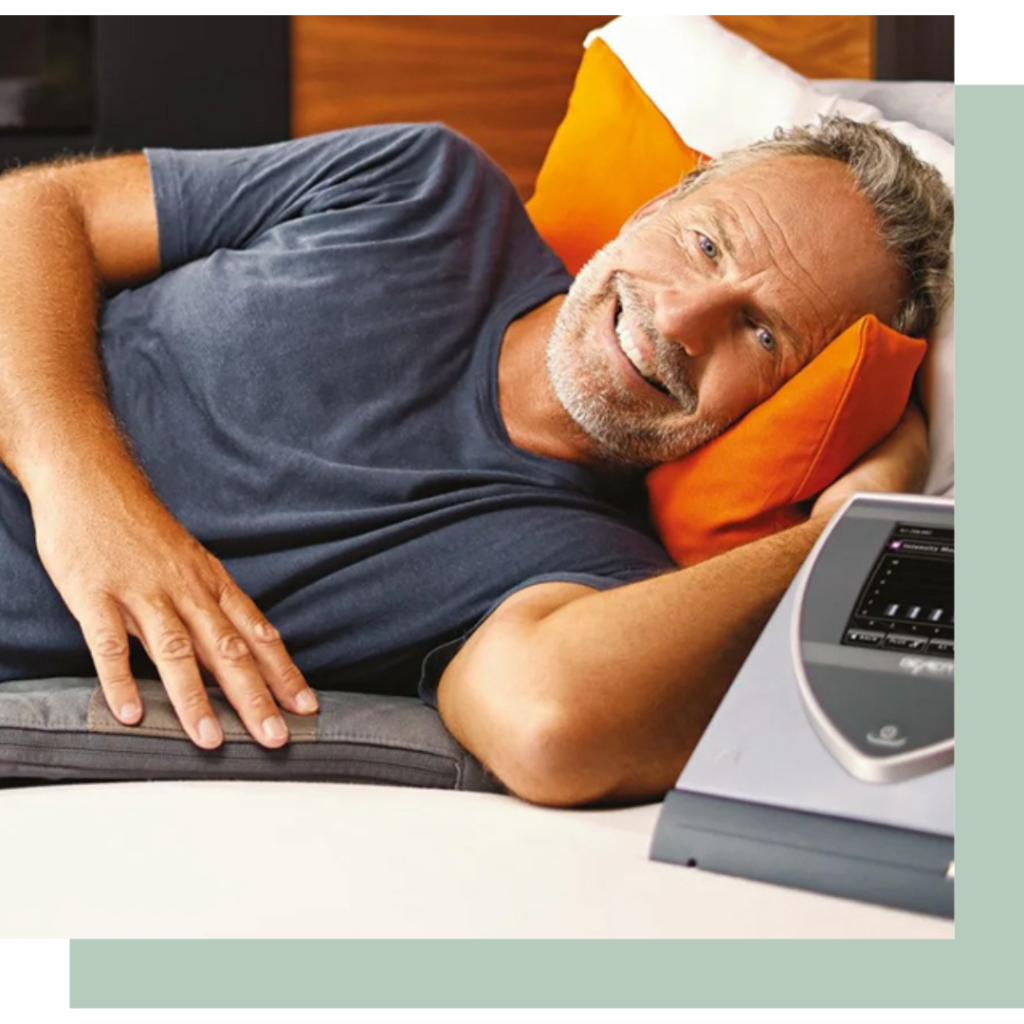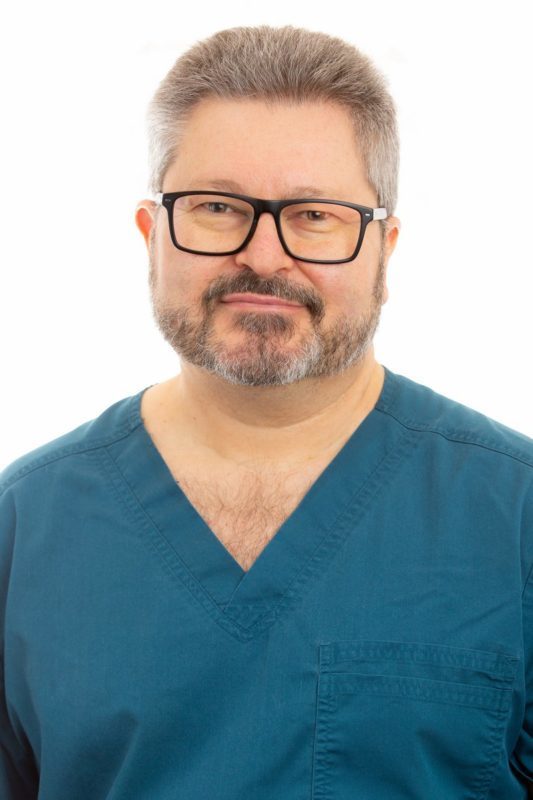"Medical acupuncture - experience from the past, healing in the present."
Medical acupuncture, also known as stimulus therapy, is part of traditional Chinese medicine and has a history dating back thousands of years. It is a highly complex and comprehensive therapeutic method that acts on a neural level, with cell-regenerating and rapid, effective pain-relieving effects. Hair-thin medical steel needles inserted into specific points/combinations beneath the skin conduct the body’s energy (Qi) and initiate neurochemical changes in the body. It simultaneously affects the nervous system, the endocrine system, and the immune system, all of which influence our musculoskeletal functions. A particular feature is that during treatment, endorphins, the hormones of happiness, are released, which are crucial to the functioning of the body’s self-healing processes.
According to the perspective of traditional Chinese medicine, the imbalance of Qi (pronounced: chee) causes health problems and improper functioning of our body, which is most noticeable along the so-called meridians. Acupuncture targets specific points of the body and stimulates the functioning of the meridians, the energy channels that permeate the body. Following acupuncture treatments, Qi begins to flow in a directed manner within the body, restoring balance. The stimulation of the appropriate points is done with single-use, sterile, hair-thin needles inserted into the upper layer of the skin.
In our health center, various complementary treatments and massages are available to enhance the effectiveness of acupuncture, thereby accelerating the healing process. In certain cases, acupuncture treatments are supplemented with BEMER vascular therapy.
What diseases can be treated with medical acupuncture?
Acupuncture can effectively treat any physical illness that does not involve more serious anatomical abnormalities requiring surgery. Acupuncture is commonly used for the following conditions, disorders, and syndromes:
- To reduce acute and chronic pains such as headaches, migraines, menstrual cramps, sciatica, spinal disorders, hemorrhoids, glaucoma, etc.
- To treat insomnia, depression, anxiety, and panic disorder.
- For allergic symptoms, whether it's dust allergies, asthma, or food allergies/intolerances.
- For skin conditions such as eczema, psoriasis, facial paralysis, hair loss, and herpes.
- For fertility issues.
- For treating chemotherapy-induced nausea and vomiting.
- Hairloss.
- In cases of otolaryngological conditions such as tinnitus, frequent dizziness, middle ear inflammation/otitis media.
- In respiratory illnesses such as cold, sore throat, pneumonia, post-covid symptoms, acupuncture is particularly recommended for all types of cough.
- For stomach problems such as bloating, constipation, Crohn's disease, and inflammation of the intestines.
- For the treatment of endometriosis, fibroids, and cysts.
- For symptoms associated with diabetes and the treatment of insulin resistance.
- For thyroid disorders.
- For weight loss.
How does a medical acupuncture treatment proceed?
The treatment can only begin following both Western and Eastern-style examinations and diagnosis. The duration of therapy, the number of needles, and the frequency of treatments vary for each patient, determined by the established treatment plan. The therapy operates in a course-like manner, using only the needles themselves and introducing no foreign substances into the body. The number of needles used in treatment is typically up to 15, and the duration of treatment is 30 minutes. Improvement can be felt after the 4th or 5th treatment, but in some cases, especially for acute pain relief, relief may be felt immediately after the first session.
How often is it recommended to attend treatments?
"Daily for friends, weekly for enemies."
– the Chinese saying goes. Indeed, acupuncture should be applied systematically according to the current condition of the body and the specific illness. The number of treatments can be 5, 10, 20, 30, or even 40-50 sessions in more severe cases.
Afterwards, the patient can do a lot for their recovery, as dedicating more time to treatment will intensify the effects of acupuncture.
While 1-2 sessions per week may serve to maintain the condition, having 3-4 treatments per week can significantly contribute to our health. Therefore, it’s worth investing time in ourselves and our healing process, and completing the prescribed series of treatments systematically.

How much time should you allocate for each session?
It’s recommended to allocate about 40 minutes for a session. The effective time of the acupuncture needles is around 30 minutes (the time you need to lie down on the bed), plus there’s preparation and the possibility to discuss any concerns with the traditional Chinese medicine practitioner.
You can schedule the treatment at any time of the day, whether it’s in the morning before work to start the day refreshed and relaxed after the 30-minute session, or as a way to unwind after work. During the treatment, it’s best to avoid using your mobile phone, and we’ll assist in relaxation and rest with soft, soothing music.
Is acupuncture really painful?

The treatment is not painful; it feels more like a mosquito bite. The patient may only feel slight pressure at each point, but this usually subsides within a few minutes after insertion. The tools used in classical acupuncture are hair-thin (0.18-0.25 mm thick), disposable, sterile medical needles.
The practitioner typically inserts a maximum of fifteen needles during a single session. In some cases, the needles may be heated, and they may also be rotated or moved. For some patients, acupuncture needles may be stimulated with electric current (electroacupuncture). Immediately after insertion, most people feel a pleasantly warm and relaxing sensation. This is a good sign!
Are there any side effects to medical acupuncture?
The treatment has minimal side effects. In certain cases, a small bruise may develop at the site of the needle insertion, which may remain sensitive for a few days. In rare cases, inflammation may develop at the site of insertion.
Bemer complementary therapy alongside acupuncture
The Bemer therapy is a physical therapy method that aims to improve blood circulation and support the body’s self-healing processes using electromagnetic fields. Bemer stands for „Bio-Electro-Magnetic Energy Regulation.”
The essence of the therapy lies in applying special, low-intensity, low-frequency electromagnetic impulses to various parts of the body. The goal is to enhance vascular function and increase blood circulation, which typically leads to better oxygen and nutrient supply to the cells. Improved circulation can promote cellular health, enhance immune system activity, and contribute to reducing inflammatory processes.
In our center, we often recommend complementary Bemer therapy alongside acupuncture treatments for certain conditions, if deemed appropriate. When used together, acupuncture and Bemer therapy can more effectively stimulate blood circulation, energy flow, and the body’s self-healing processes.
A treatment supplemented with Bemer therapy differs from traditional acupuncture in that it takes place on a special Bemer bed. It’s advisable to notify us in advance of your interest in using the Bemer bed when scheduling your appointment, so we can ensure its availability. During the treatment, you may experience a warm, tingling sensation, but you should not feel any discomfort. Bemer therapy can only be provided in conjunction with acupuncture treatments and cannot be booked separately. If it’s recommended to complement a patient’s treatment with Bemer therapy, our traditional Chinese medicine practitioner will always highlight this, and it’s advisable to use it only in such cases.

The treatment is performed by: János Papp
Traditional Chinese medicine practitioner
As a holistic healer, I aim to convey the importance of health consciousness to my patients. I advocate the viewpoint that we are not victims of circumstances, but rather, we can greatly contribute to our well-being by paying attention to the signals of our bodies, understanding how they function, and preserving our health to prevent illnesses. Most people do not live their lives in this manner, so it takes time to shift their mindset. Facilitating this process of transformation is one of the most significant tasks in my work. However, as a healthcare professional, it is also uplifting to see someone being cured of endometriosis, PCOS, or to be able to reduce the aftereffects of a stroke, or to restore movement to a paralyzed limb, or even to bring peace to those struggling with constant tinnitus. This dedication accompanies me throughout my life.
Every therapy is preceded by a comprehensive assessment, where based on the diagnosis, the necessary number of acupuncture treatments is determined.
| Comprehensive health assessment (traditional chinese medicine diagnostic + laboratory diagnostic) | 1 session | 60 minute | 45 000 HUF |
| Consultation (for current patients) | 1 session | 15 minutes | 15 000 HUF |
The legal framework for practicing acupuncture.
„According to Section 110 (4a) of Act No. CLIV of 1997 on Healthcare, except for individuals licensed to perform acupuncture, no one may prescribe or perform interventions penetrating organs or tissues, except for auricular acupuncture applied for the cessation of addictions.
Government Decree No. 11/1997 (V. 28.) NM, Section 110 (4a): Upon request of individuals holding a diploma obtained after completing at least 5 years of higher education studies in the field of traditional Chinese medicine, the authority specified in the government decree – based on the expert opinion issued by the Health Scientific Council Committee regarding the compliance of the diploma with the healthcare activities specified in the application – may issue a permit for activities corresponding to their qualifications for a specified period of time in accordance with the provisions of the government decree. The condition for issuing the permit is that the applicant credibly demonstrates that, according to the laws of the state where their previous, regularly performed healthcare activities were carried out, or, failing this, according to the laws of the state of their citizenship, there are no measures, penalties, or criminal measures restricting or prohibiting the practice of healthcare activities, and that they meet the health suitability requirements prescribed for performing the activities. The actual recognition of the certificate or diploma proving the qualification is not necessary for performing the licensed healthcare activities. The authority specified in the government decree maintains a register of permits, which includes the personal identification data of the applicant, the number of their diploma, and the content of the permit.”

